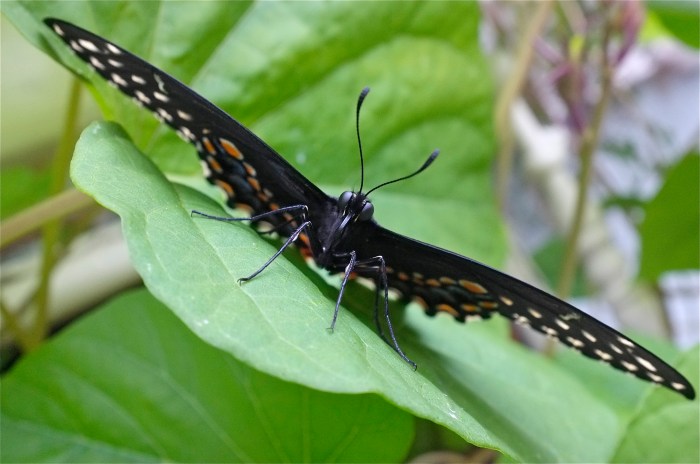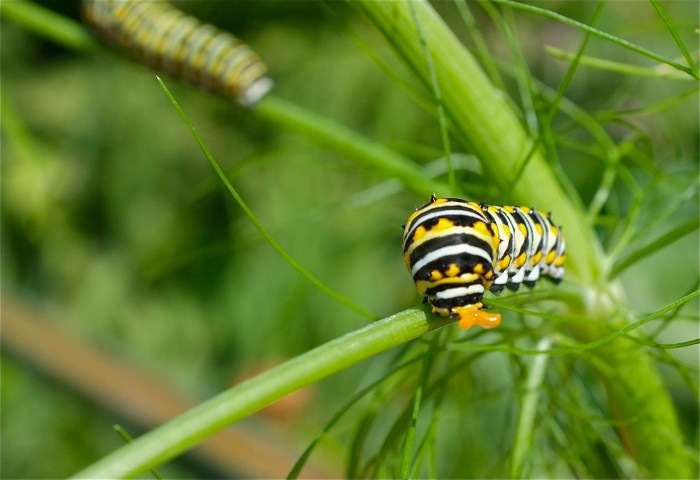What a Wonderful World, sung by five-year old Madeline Ciaramitaro at her great-grandmother’s memorial. Surrounded by her loving family, Madeline does’t miss a lyric, despite the baby crying (on cue) and a great deal of background noise. I think Madeline’s world is pretty wonderful!
Tag: Kim Smith Video
The Eastern Carpenter Bee
3 minute video featuring the Eastern Carpenter Bee. The music is the opening movement of Aaron Copland’s Appalachian Spring, performed by the Boston Symphony Orchestra.
The Eastern Carpenter Bee (Xylocopa virginica) is an important pollinator for many open-faced spring flowers including the blossoms of fruiting trees—crabapple, apple, pear, peach, plum, and wild cherry—as well as holly and brambles. X. virginica has an especially bad reputation with blueberry growers because they have strong mouthparts (capable of boring into wood), which will easily tear flowers with a deep corolla—blueberries and azaleas, for example. In the video you can see the bee probing into the sides of, and in some instances tearing, the petals to gather nectar from the blossoming Japanese Andromeda (Pieris japonica). The damage done to wood is usually minimal and cosmetic.
Carpenter Bees are regularly mistaken for bumblebees. Their shiny black abdomen most easily distinguishes them. Male and female carpenter bees can easily be differentiated at a glance. The male has a patch of yellowish-white cuticle at the top its head; the females face is entirely black.
Male Eastern Carpenter Bees are aggressively territorial. They will fly at you noisily and vigorously when in their territory, but it is all just show—they are incapable of stinging!
Muddled Mallard
An atypical chocolate brown duck–possibly a hybrid between a domestic duck and a Mallard–filmed at Wonson’s Cove, Rocky Neck.
Life Story of the Black Swallowtail Butterfly
Coming Soon: Life Story of the Black Swallowtail Butterfly tells the story of the ubiquitous and stunning Black Swallowtail butterfly.
 My new documentary film captures the beauty and mystery of the Black Swallowtail, through all its life stages, and in it’s surrounding habitats. I think you will be amazed and captivated by this garden-variety and seemingly ordinary, extraordinary butterfly!
My new documentary film captures the beauty and mystery of the Black Swallowtail, through all its life stages, and in it’s surrounding habitats. I think you will be amazed and captivated by this garden-variety and seemingly ordinary, extraordinary butterfly!
From Egg to Caterpillar to Chrysalis to Adult
 Black Swallowtail Caterpillar Everting Osmeterium
Black Swallowtail Caterpillar Everting Osmeterium
 Black Swallowtail Emerging from Chrysalis
Black Swallowtail Emerging from Chrysalis
Filmed on Cape Ann. Click photos to see full-size images.
 One of several preferred Black Swallowtail habitats—Gloucester’s sandy wildflower meadow at Good Harbor Beach. The milkweed provides nectar for swallowtails on the wing and Queen Anne’s lace is a food plant of the Black Swallowtail caterpillars.
One of several preferred Black Swallowtail habitats—Gloucester’s sandy wildflower meadow at Good Harbor Beach. The milkweed provides nectar for swallowtails on the wing and Queen Anne’s lace is a food plant of the Black Swallowtail caterpillars.
Aftermath
 Isn’t Niles Pond gorgeous? The above photo I posted on Sunday; the pond looks especially pristine and sparkly in the snow and ice.
Isn’t Niles Pond gorgeous? The above photo I posted on Sunday; the pond looks especially pristine and sparkly in the snow and ice.
The following day GMG follower and Eastern Point resident Daniel D. wrote to say “It does look beautiful, and as a Resident of Eastern Point, I love when others can share in the beauty of our neighborhood. Unfortunately, the picture for today should be all the cans, boxes, and trash left behind by these people when they finished skating that day, all glaringly standing out as the snow melts in that exact spot… Hopefully they read this comment and then quickly come and clean it up before the ice melts this week and it all sinks to the bottom of our lovely pond. I’m Just Saying….”
Hey guys—it looked as though you were having a great time, but then had to leave very suddenly—with trash, half a dozen pucks, and even a shovel left behind. Perhaps there was an emergency—whatever the case—could someone who was playing hockey at Niles on Sunday please come and clean up the mess. I picked up much, of what I could reach, but the embankment is muddy and slippery and you will need tall waders to reach the plastic bottles and shovel. Thank you for your consideration.
As Daniel D. correctly stated, all the trash is going to sink to the bottom. Many species of waterfowl dive for vegetable matter and the seeds, stems, roots, and bulbs of submerged aquatic plants. They can easily became entangled in trash. The last shot of the bird’s nest is meant to symbolize the pond’s fragility.
Clip of the stunning Northern Pintail (Anas acuta) at 3 minutes 45 seconds.
Silly Old Coot
When I was a child, my siblings and I oftentimes called one another nonsensical names– “old coot” and “silly old coot” are two insults we frequently relied upon. I am not sure from where we picked up these idioms, but I am positive we did not know a coot is a charming water bird.
As I was leaving Eastern Point Saturday afternoon, I nearly ran over two coots that were in the road adjacent to Niles Pond. There was a crowd of birders positioned along the water’s edge with binoculars and cameras equipped with stupendously enormous telephoto lenses. Quickly parking, I grabbed the video camera, with no time to set-up the tripod. For the most part the birds stayed in the middle of the pond, however several times the coots swam closer to shore, with cover provided by the tall grasses. Coots have a sprightly way of paddling, sort of a bobbing swim, and I thought the jaunty melody of this Beethoven symphony mirrored their movements. Featuring, in order of appearance, Ruddy Duck, Red-breasted Merganser, American Coot, female Ring-necked Duck, and female Mallard.
Total length 2 minutes and 20 seconds.
Reader Judy writes: Astute birders shoot cute coots scoot – woot!
Best Friends’ Sunset
Filmed at Oakes Cove, Rocky Neck, November 7, 2011. “Count on Me” by Bruno Mars, from the album Doo-Wops and Hooligans.
Oakes Cove is a small, protected cove located on the southwestern side of Rocky Neck within Gloucester’s Inner Harbor. The “best friends” were unaware they were being filmed. I loved that they were so familiar with the ledge that they knew the exact location of the perfect perch for watching the setting sun together.
Total length 6 minutes, 20 seconds.


